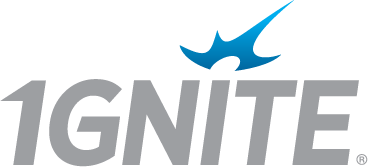The Top 5 2022 Trends in Facility Management
How To Make Them Work To Your AdvantageFacility management professionals have faced a nearly constant stream of challenges over the past 2 years of the COVID-19 pandemic. As businesses are forced to adapt to the challenges they are facing, the job of managing the facilities of that business becomes increasingly complex. As we move into 2022, here are the top 5 trends that facilities managers will face, and how to use them to your advantage to get an edge on the competition.
2022 Trends # 1: Reduced Real Estate Footprints
One thing companies are learning through the pandemic is that office space is not as critical as it used to be. To make it through quarantines and lockdowns, employees were put in a position to work remotely and lean on technology to keep businesses running. What used to be a limited-use situation, has quickly become the norm. According to a recent study from Garner focusing on 9 future work trends post covid, it is estimated that:
“Nearly 50% of full-time workers are working remotely now.”
Businesses are reducing their real estate holdings and office space to cut overhead in the wake of emptying offices, opting for smaller, more flexible spaces.
Solution To Effectively Reduce Real Estate Footprints
Facility Managers can rely on robust facility management software solutions and office space planning tools to help configure smaller spaces to accommodate for reduced, more flexible groups that favor hot-desking and collaborative working.
2022 Trends # 2: Increasing Number of Remodels and Refresh Initiatives
Retailers are seeing some of the biggest changes through the pandemic, with online shopping and delivery options taking priority over brick-and-mortar locations retailers are increasing the pace of store remodeling to improve the aesthetic of their stores to appeal to the shoppers while changing the store layouts to provide more space for inventory and provide an efficient in and out shopping experience. In addition, the entry of new competitors such as Amazon, which introduced high-tech neighborhood stores with a variety of fresh options is forcing discount store chains to complete refresh initiatives at a fast pace in order to offer a mix of fresh products sold to their customers.
Solutions To Manage A Large Number Of Store Remodel Or Refresh
Covid created a significant shift in behavior, forcing retailers to make changes to their brick-and-mortar outlets to ensure repeat purchase and optimum omnichannel experience for consumers who have increasingly become tech-savvy, environmentally conscious, and channel-agnostic. In fact, consumers returning to physical stores are looking for an enhanced experience, less friction, and a richer more integrated experience. Store refresh best practices ensure your retail stores are redesigned to improve the consumer experience, as well as optimize the omnichannel operation to keep your stores relevant in successful in 2022
To make the most of this trend, Facility Management professionals should leverage the power of re-Commerce to maximize the value of old equipment, fixtures, shelves, or other assets instead of landfilling them, which is an extremely costly value proposition.
It is time-consuming to find and manage buyers that are reliable and offer fair market value for your facilities’ used assets across your geographic footprint. However, the financial benefits can be significant therefore it is worth assigning someone on your team to manage the process or outsource it.
Another way to reduce the stress associated with coordinating a large number of store refreshes is to make the most out of technology to map, track and move items such as coolers or freezers for example. Deploying an internal marketplace for example allows Facility Managers the ability to distribute used units strategically to overcome supply chain disruptions.
2022 Trends # 3: Outsourcing & Managing Vendors to Address Disruptions
On the best of days, a facility manager’s job can feel like running from one fire to the next trying to stay ahead of the next problem. With outside influences like supply chain issues and natural disasters added in the mix, Facility Managers can quickly find themselves overwhelmed. To handle not only the volatile day-to-day situations, as well as disaster recovery situations, but many are also turning to outsource and increasing the number of vendors available to help cover their bases more effectively.
Solutions To Manage Vendors Effortlessly
When outsourcing, an important factor to consider is to find a reliable vendor that is accountable for handling a block of related services and that can make properly informed recommendations to help streamline operations. Facility Managers have the find the right balance between managing a complex network of specialty vendors who will provide great prices and concentrating a broad block of work in the hands of a few vendors, which is simpler but can become excessively expensive. For example, while it does not make sense to use highly qualified technicians for labor work, there are benefits in working with a company that can handle both non-emergency and emergency situations gives you a single point of contact for all your projects, makes for easier billing, and saves you time by not having to manage multiple companies for multiple locations. Not all vendors are created equally – so take your time, read about the benefits and challenges of outsourcing Facility Management, and use this reference to do your research. Just like the right vendor can mean great success, the wrong vendor is just going to create more issues.
2022 Trends # 4: Environmental and Social Responsibilities
Consumers are increasingly aware of the impact of environmentally-friendly companies, and according to a recent study done by Futerra, published by Forbes:
” 88% of consumers surveyed preferred companies that were environmentally responsible”.
In addition, The U.S. Energy Information Administration quantified that:
“Buildings account for about 40% of the total US energy consumption, ranking above the transportation and manufacturing industries, and it is estimated that buildings produce over 200 million tons of waste annually in the US”.
Corporations are responding by committing to achieving a substantial reduction in carbon emission and are expecting every facet of their operations to drive an incremental reduction in energy and water consumption and waste generation. Working environmentally and socially responsible practices into your operations is key to harnessing not only the consumer-pleasing aspect of wasting less but also the financial benefits of running an efficient operation, as well as showing how your group is instrumental in driving your company’s environmental goals.
Solutions To Run Your Operation In Environmental Responsible Way
There are countless ways to work environmental and social responsibility into your day-to-day operations. Your least expensive venue is to recycle what you can, from waste generated by remodels to excess inventory and ongoing operations, reselling, recycling, or donating instead of systematically throwing everything in the trash can turn an expense into a revenue stream very quickly.
Other options include replacing the consumables used in your facilities that are either toxic to the environment or were manufactured with no environmental considerations. Items such as nontoxic, biodegradable cleaning products, replace energy inefficient assets with high-efficiency ones such as lights and energy star certified equipment and adopt LEED-certified equipment that uses less water.
Finally, to optimize your building energy use, you can use smart sensors and leverage the power integrated building controls to optimize the efficiency in your facility
2022 Trends # 5: Make Data-Informed Decisions
Better data means better decisions. It really is that simple. Technology is constantly improving the quality of the data that is being collected, leading to more detailed insights and analysis.
“The rise in demand for facility management solutions integrated with intelligent software is expected to drive the adoption of solutions and services.” According to the latest facilities management market assessment from Market Report which estimates:
“ The global facility management market size to grow from USD 42.2 billion in 2021 to USD 76.3 billion by 2026, at a Compound Annual Growth Rate (CAGR) of 12.6% during the forecast period.”
Solutions To Leveraging Technology To Make Data-Informed Decisions
The key here is basically getting the best, most accurate, most impactful information for the money being spent. The clear choice for that kind of data is IoT (the internet of things). IoT networks consist of a collection of sensors that all report to central monitoring software. These sensors can be anything from smart thermostats and light switches to cooler sensors that can detect when a compressor is overworked.
Leveraging the power of IoT sensors is the #1-way facilities managers can truly get a picture of what’s going on in their locations in real-time. Facilities managers don’t just need to implement as many sensors as they can, they also need to focus on a data management strategy that helps them make sense of all the information being collected. An IoT implantation generally comes with a hefty price tag, but the money saved from making IoT-based decisions can easily offset the initial investment.
In some cases, implementing IoT sensors throughout an operation just isn’t feasible, but Facility management professionals can still rely on other techniques to gather data. For example, if Facility Managers do not have extensive information from their Facility management software, they can still rely on preferred vendors to leverage data and analytics to provide insights to help plan ahead to minimize disruptions to operations, standardize the work, and use technology to eliminate change work orders.
1GNITE not only understands the 2022 trends that are affecting the facility management professionals, the uphill battle that they are facing every day and has expertise in helping turn those trends into an advantage for you without requiring any capital investment. We have the experience to make your life easier and make your business run smoother. We work with some of the country’s biggest retailers, and we’re ready to put those skills to work for you.
-
ReCommerce Ultimate Guide and 2022 Trends
-
Commercial Emergency Cleaning Services: Definition and Expectations
-
How To Find The Best Emergency Cleaning Company
-
The Only 3 ReCommerce Metrics Retailers Should Focus on in 2022
-
5 Ways To Build A Strong ReCommerce Program
-
Emergency Cleaning Best Practices: A Tool You Don’t Want To Miss.










